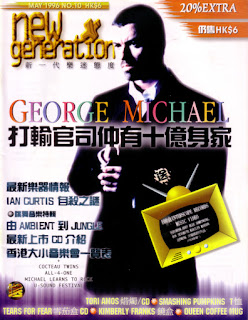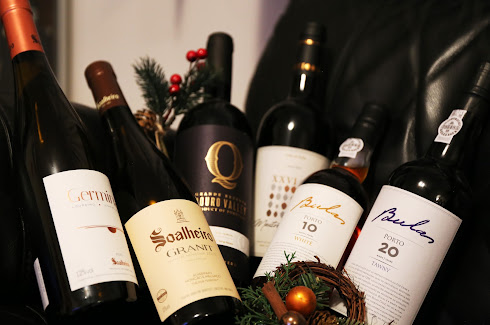Chateau Figeac莊主Thierry Manoncourt逝世

剛收到 Eric d’Aramon 的電郵,得悉 Chateau Figeac 老莊主 Thierry Manoncourt 逝世的消息。當你看過他簡短的自傳,就會知道他對酒莊以至整個波爾多貢獻有多大了。
Thierry Manoncourt - in his own words
The story of a life dedicated to innovation
(Text of a presentation, probably written in 2009)
My life as a winemaker came about by chance, nothing in my family background predestined me to this: my great-grandfather built the railway line between Moscow and Saint Petersburg, my paternal grandfather was in import-export in Egypt during the building of the Suez Canal, my other grandfather was Director at the Hôtel de Ville in Paris in the beginning of the 20th century, and my father made scales for Marie Curie when she was researching radioactivity.
My maternal grandparents lived near Paris, in Neuilly, and they bought Château de Figeac in 1892. They had thrice refused an offer to purchase the estate since they had no intention of living there; when they decided to buy it was simply as a real estate investment, since it made little sense to escape Paris' hot August weather by heading south for vacation! They preferred Brittany, Normandy or the Swiss Alps. Furthermore, they figured that Figeac was too distant (a day's journey by train) and too large. Eventually, one of my grandfather’s old schoolmates convinced my grandparents to buy the property rather than keep a family place in Aachen situated between Liège and Aix la Chapelle, and so they finally made the purchase!
Since my grandparents were never there, they installed an estate administrator at Figeac and continued to live in Paris and Neuilly, where I was born in 1917.
As for me, even after earning a diploma from the National Institute of Agronomy in Paris, I thought I would work in the capital for a ministry or some organization. It was at this time that the property was inherited by my mother. Although Figeac had given birth to Cheval Blanc (1832–1838), it had fallen into disrepair due to numerous changes in ownership before its purchase by my family, who themselves had only a distant relationship to the estate.
And so it was that I accepted to look after the property for one year. This was in 1947. As it turned out, the work was interesting; also I married Marie-France in 1956, who was from neighboring Perigord. The result is that we're still here making wine at Figeac over 60 years later.
I came with views that were not traditionally Bordelais. And there was so much that had to be done!
I began by planting grass in the vineyard to help produce humus in the soil, although at this time a "well-tended" vineyard showed not a blade of grass. Wanting to understand what each grape variety brought to the wine, it seems that I was the first in Bordeaux to bottle unblended Merlot, Malbec, Cabernet Sauvignon and Cabernet Franc. From 1950 to 1955 around 30 bottles of each variety were made, which I began to taste only after they had reached 10 years of age. This allowed me to make informed choices about the planting at Figeac today by eliminating Malbec and replacing it with Cabernet Sauvignon.
After pruning the cuttings had been burned, either in the vineyard or fireplace; I had them ground up and spread over the ground to produce humus before it became common practice—there were not yet tractors to work the vineyards!
I eliminated copper sulfate treatments against mildew, using synthetic treatments instead because copper is poison for the soil.
I was the first to use dichlofluanide against gray rot in 1968, which allowed Figeac's wine to be the only one in Saint-Emilion to keep its classification (neither Ausone, nor Cheval Blanc, nor any of the other properties among the 12 Premier Grand Cru Classés or the 50 Grand Cru Classés were classified in 1968).
Since my beginnings in 1947, thanks to my agricultural studies in Paris, I understood how to control malolactic fermentation, while professors Peynaud and Ribereau-Gayon from the oenology school (who visited Figeac to see why I was not having any problems) only began to disseminate information about this in the 1950s and 60s.
In 1970 I began putting all of Figeac's wine in 100% new barrels, but for a carefully controlled amount of time. Back then only the first growths and two other properties used this (very expensive) method, which many others have since adopted to please Bob Parker—but without adopting the necessary controls.
Another innovation: although I had not vinified the 1945 vintage it was left to me to bottle, and I found there were differences in the wine due to the varied age of the barrels. I put aside some lots and created a second wine, La Grange Neuve de Figeac; in 1951 I bottled the entire vintage under this name while all the other Bordeaux estates put everything under the name of the Grand Vin—even though this was a vintage which is today best forgotten. At this time the creation of a second wine was a qualitative innovation, since Clos de Marquis dates from around 1970, Reserve de la Comtesse from 1978, and Petit Cheval from only 1988.
In 1970–1971 I dug out a deep cellar, around a tenth of a hectare in size, which attracted visitors from most of the Napa Valley vineyards and elsewhere. (Bob Mondavi came seven times!) The production buildings were remade by my friend, the architect Jacques Lhuillier, one of the two creators of the celebrated Maison de la Radio in Paris. We installed doors of glass instead of wood to show that here we had nothing to hide!
This was also when we installed stainless-steel vats. At the time, in 1971, there were only three vat rooms with stainless-steel: Haut-Brion, Latour, and Figeac.
The wine's reputation had attained a very high level, and Château de Figeac was classified Premier Grand Cru Classé in the first Saint-Emilion classification in 1954–1955, a position it has always held.
After travels to establish my wine’s reputation in England, Belgium, and Germany (Frankfort, Cologne, and Bremen) with Marie-France, I took part in the important mission to the United States led by President [Prime Minster?] Jacques Chaban-Delmas, which reopened the American market to Bordeaux wine after a long "dry period".
In 1973 Pierre Tari (Giscours), Bruno Prats (Cos d'Estournel) and I founded the Union des Grands Crus to travel to Asia the following year and open the Asian market to our wines. Among other things this involved my decorating Prince Takamatsu, the brother of the Japanese Emperor, with the medal of the Bordeaux Académie du Vin (which was amply reported on television and in the press)! We chose only 18 proprietors for this voyage, including those from Yquem, Margaux, Haut-Brion, and Pétrus, together with professor Emile Peynaud and the Michelin-starred chef Laporte from Biarritz. It was this trip which formally introduced wine to Asia.
Lacking a natural talent for sales, I turned this aspect of Figeac's operation over to the mnégociants on the Bordeaux marketplace. At the time this sector of the "Place" was constantly engaged in internecine conflict which I found ridiculous, so in 1954 I let it be known through the most reputable broker of the time that I had an idea to create a group of regular buyers. It was only eight years later that this broker was able to bring together the eight most important négociants in Bordeaux; this was the 1962 "A-list" of Bordeaux négociants: Barton & Guestier, Cruse, Calvet, Eschenauer, Delor, de Luze, Ginestet, and Moueix.
Today, Figeac is managed by our son-in-law Eric d'Aramon with our daughter Laure d'Aramon, and each of our four daughters owns a part of the property. Still, Marie-France and I remain very active at Figeac.
Thierry Manoncourt (1917-2010) 於8月27日逝世,享年92歲。



留言
Also visit my website ... Same Day Payday Loans